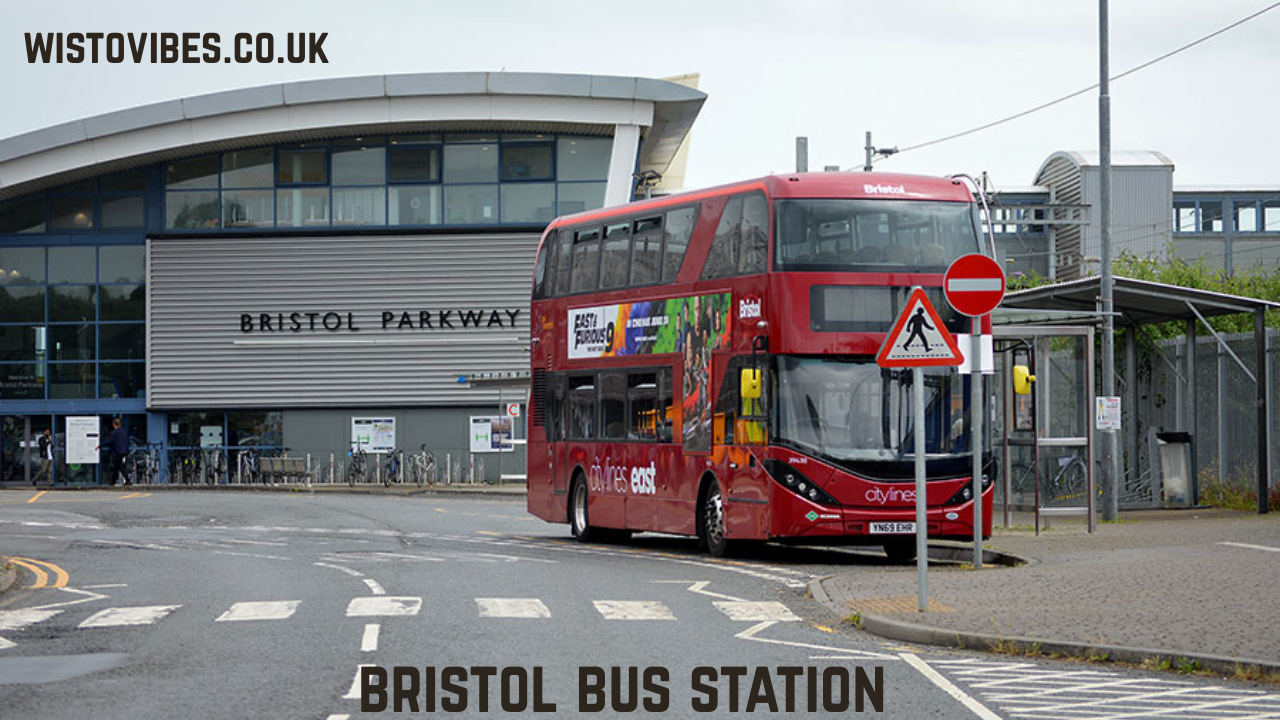Bristol Bus Station is the central hub for coach and bus services in the city of Bristol, one of the most vibrant and culturally rich destinations in the southwest of England. For decades, this station has played a vital role in connecting the city with surrounding towns, rural areas, and national destinations across the United Kingdom. Its strategic location near the city center makes it a convenient starting point for travelers, whether they are commuting for work, exploring Bristol’s attractions, or embarking on long-distance journeys to other regions. Bristol Bus Station not only acts as a transport interchange but also reflects the city’s growing importance as a hub for commerce, culture, and tourism.
History and Development of Bristol Bus Station

The history of Bristol Bus Station is closely tied to the expansion of the city’s transport infrastructure in the 20th century. As Bristol grew into a commercial and cultural powerhouse, the need for a central bus station became increasingly urgent. The station was designed to serve both local bus routes and long-distance coaches, becoming an essential part of the city’s public transport network. Over time, the station underwent several upgrades to meet modern demands, including improvements in passenger facilities, accessibility, and safety standards. Its continued development reflects Bristol’s commitment to offering efficient and sustainable transport solutions for residents and visitors alike.
Location and Accessibility of Bristol Bus Station
Bristol Bus Station is situated in a prime location close to the heart of the city. It lies just off Marlborough Street, making it easily accessible by foot from major shopping areas, cultural landmarks, and hotels. The central position of Bristol Bus Station means that passengers can quickly connect with other forms of transport, including Bristol Temple Meads railway station and local taxi services. Accessibility is a priority, with step-free access, lifts, and well-designed pathways ensuring that all passengers, including those with reduced mobility, can comfortably navigate the station. Its location ensures that it serves not only as a transport hub but also as a convenient gateway to the city’s many attractions.
Facilities Available at Bristol Bus Station

Bristol Bus Station offers a wide range of facilities designed to provide comfort and convenience for passengers. Waiting areas are spacious and equipped with seating for travelers awaiting their departures. Toilets, baby-changing rooms, and accessible washrooms are provided to cater to different needs. For those who require refreshments, the station has cafes and shops offering snacks, drinks, and travel essentials. Information desks and digital displays provide up-to-date details about coach and bus departures, ensuring passengers can plan their journeys with ease. Additionally, Bristol Bus Station has provisions for lost property and ticket purchasing, making it a fully equipped transport hub designed to serve diverse travelers.
Bus and Coach Services at Bristol Bus Station
Bristol Bus Station is served by a wide range of bus and coach services that connect the city with regional, national, and even international destinations. Local bus routes provide vital links to nearby neighborhoods, while long-distance coaches operated by national companies travel to cities such as London, Birmingham, Cardiff, and Manchester. Many of these services operate throughout the day and night, ensuring flexibility for passengers with varying schedules. The station is particularly important for students, commuters, and tourists who rely on its extensive network for affordable and reliable transport. Bristol Bus Station continues to evolve as demand for coach and bus travel grows.
Connections to Bristol Temple Meads and Beyond

One of the strengths of Bristol Bus Station is its connectivity to other key transport hubs, particularly Bristol Temple Meads railway station. Travelers can easily transfer between bus and rail services, making multi-modal journeys simple and convenient. This connectivity ensures that Bristol functions as a well-integrated transport city, with options for onward travel to the southwest, London, and other major destinations. Taxi services, cycle routes, and pedestrian walkways also link Bristol Bus Station with the wider city, offering passengers flexible choices depending on their needs. These strong connections enhance the role of the station as a cornerstone of the city’s transport system.
Importance of Bristol Bus Station for Commuters
For daily commuters, Bristol Bus Station is an essential facility that helps them reach their workplaces efficiently and affordably. Many people in Bristol rely on buses to avoid the challenges of traffic congestion and the high costs of driving and parking in the city center. The station provides regular services at peak times, ensuring that workers can travel reliably. The affordable pricing of bus services makes the station especially important for students and those in lower-income households. By offering a central hub for commuting, Bristol Bus Station contributes significantly to the city’s economic activity and workforce mobility.
Bristol Bus Station and Tourism
Tourism plays a huge role in Bristol’s economy, and Bristol Bus Station is often the first point of contact for visitors arriving by coach. Tourists benefit from the station’s central location, which allows them to quickly access famous attractions such as the Bristol Museum and Art Gallery, the Clifton Suspension Bridge, and the SS Great Britain. Tour operators also make use of the station to organize excursions and day trips, making it a gateway for exploring both the city and the wider region of southwest England. By providing reliable and affordable travel, Bristol Bus Station supports the city’s tourism industry and enhances its reputation as a welcoming destination.
Design and Architecture of Bristol Bus Station
The design and architecture of Bristol Bus Station have evolved over the years to reflect modern standards of safety, functionality, and passenger comfort. The layout is designed to facilitate easy boarding and disembarking from buses and coaches, with clear signage guiding passengers throughout the station. Attention has been given to creating spacious waiting areas and ensuring natural light where possible. While the station is primarily functional, its design emphasizes efficiency, accessibility, and safety, reflecting the city’s practical approach to urban transport. Its architecture continues to adapt to the growing needs of the community it serves.
Role of Bristol Bus Station in Reducing Traffic
Bristol, like many growing cities, faces challenges related to traffic congestion and pollution. Bristol Bus Station plays a significant role in reducing the reliance on private vehicles by offering reliable public transport alternatives. By encouraging people to use buses and coaches instead of cars, the station helps reduce emissions and improves air quality in the city. Public transport also makes better use of urban space, reducing the demand for car parking in the busy city center. The station is therefore an essential component of Bristol’s efforts to promote sustainable transport and reduce its environmental footprint.
Safety and Security at Bristol Bus Station
Safety and security are key priorities at Bristol Bus Station. The station is equipped with CCTV cameras, security staff, and emergency protocols to ensure the safety of passengers and staff. Clear signage and information points help travelers navigate the station with confidence. Staff are trained to assist passengers with inquiries and to respond quickly in case of incidents. The emphasis on safety helps build passenger trust and ensures that people feel comfortable using the station at all times of day. By maintaining high standards of security, Bristol Bus Station provides a safe environment for its thousands of daily users.
Accessibility and Inclusivity in Bristol Bus Station
Bristol Bus Station is designed with inclusivity in mind, ensuring that it can be used comfortably by passengers of all abilities. Step-free access, lifts, and ramps are provided for those with mobility challenges. Accessible toilets and seating areas further enhance the experience for travelers with disabilities. Information services are designed to be clear and easy to understand, with digital displays and announcements providing essential details about departures. The commitment to inclusivity ensures that Bristol Bus Station can serve the entire community fairly, reflecting the city’s values of equality and accessibility.
Technology and Innovation in Bristol Bus Station
Modern technology has transformed the operations of Bristol Bus Station, improving efficiency and the passenger experience. Digital displays provide real-time updates on bus and coach departures, reducing uncertainty for travelers. Mobile apps and online booking systems allow passengers to purchase tickets in advance and plan their journeys more effectively. Contactless payment options add convenience, particularly for local bus services. As technology continues to evolve, Bristol Bus Station is expected to incorporate further innovations, including improved digital wayfinding and eco-friendly infrastructure. Technology ensures that the station remains relevant in an increasingly digital world.
Environmental Efforts at Bristol Bus Station
Sustainability is a growing priority in transport, and Bristol Bus Station is part of the city’s efforts to create an environmentally responsible public transport system. Many bus and coach operators using the station are transitioning to low-emission or hybrid vehicles, reducing the carbon footprint of journeys. The station itself has introduced energy-efficient lighting and waste management systems to minimize its environmental impact. These measures align with Bristol’s wider sustainability goals and its reputation as a green city. By embracing eco-friendly practices, Bristol Bus Station contributes to the city’s vision of a cleaner, healthier future.
Economic Impact of Bristol Bus Station
Bristol Bus Station plays a crucial role in supporting the city’s economy. By facilitating affordable transport, it allows businesses to attract workers from a wider area, increasing employment opportunities. The station also boosts retail and hospitality industries by bringing tourists and shoppers into the city center. The flow of passengers through the station creates demand for shops, cafes, and services within the facility itself, generating additional revenue. Overall, Bristol Bus Station is more than just a transport hub; it is an economic engine that contributes to the prosperity of the entire city.
Challenges Faced by Bristol Bus Station
Despite its many strengths, Bristol Bus Station faces several challenges. Increasing passenger demand can sometimes strain facilities, leading to overcrowding during peak times. The station must also continue to adapt to technological changes and rising expectations for convenience and comfort. Traffic congestion in surrounding streets can delay buses arriving at or leaving the station, affecting punctuality. Furthermore, maintaining safety and security requires ongoing investment. Addressing these challenges is vital to ensuring that Bristol Bus Station continues to serve the city effectively in the years to come.
Future Plans for Bristol Bus Station
The future of Bristol Bus Station will likely involve continued upgrades and innovations to meet the city’s growing transport needs. Plans may include the expansion of facilities, integration of greener technologies, and further improvements in accessibility and passenger comfort. The station is also expected to strengthen its role as part of Bristol’s sustainable transport strategy, supporting the transition to low-emission buses and encouraging more people to use public transport. By evolving with the times, Bristol Bus Station will remain a vital asset for the city and its residents.
Bristol Bus Station and the Local Community
Beyond its role as a transport hub, Bristol Bus Station also contributes to the life of the local community. It provides a safe and accessible space for people traveling to work, school, or social activities. Local businesses benefit from the flow of passengers, while residents enjoy improved connectivity to other parts of the region. The station also plays a role in shaping the city’s identity, reflecting Bristol’s character as a forward-thinking, accessible, and environmentally conscious place. By serving both practical and symbolic functions, Bristol Bus Station strengthens community life in meaningful ways.
Conclusion
In conclusion, Bristol Bus Station is much more than a place to catch a bus or coach. It is a central hub that connects people to work, leisure, and opportunity, while also supporting tourism, sustainability, and the local economy. With its rich history, modern facilities, and future-focused outlook, it continues to play a vital role in the city’s transport system. Its importance cannot be overstated, as it serves thousands of people daily and underpins the functioning of Bristol as a modern city.
FAQs
Q1: Where is Bristol Bus Station located?
Bristol Bus Station is located on Marlborough Street, close to the city center.
Q2: What services are available at Bristol Bus Station?
The station offers local bus services, long-distance coaches, ticketing facilities, waiting areas, and refreshments.
Q3: How does Bristol Bus Station connect to Bristol Temple Meads?
Regular buses, taxis, and walking routes link Bristol Bus Station with Bristol Temple Meads railway station.
Q4: Is Bristol Bus Station accessible for disabled passengers?
Yes, the station provides step-free access, lifts, accessible toilets, and seating.
Q5: What role does Bristol Bus Station play in the city?
It serves as a transport hub, supports tourism, boosts the local economy, and promotes sustainable travel.
Read More: Hatfield Terminal History Operations and Significance of Hatfield Terminal




